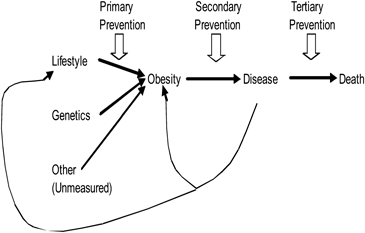

As a result, the high status becomes magnified and continues the cycle of advantages, leading to more rewards. The high-status intellect then causes them to receive more rewards than those of lower status. This is the belief that intellects with high status tend to receive more credit for similar achievements than those with lower status. The "Matthew's Effect" is a common example of simultaneity. Simultaneity occurs in conditions with jointly determined variables. In simultaneity, the flow moves right to left (X to Y) and left to right (Y to X), unlike reverse causality, which moves from left to right (Y to X). Here, X causes a change in Y, and Y causes a change in X. However, simultaneity is when variables on both sides of a model equation impact one another at the same time. In reverse causality, only Y causes a change in behavior.

While reverse causality and simultaneity have similar definitions, the two terms aren't the same. This means that the Y variable, anxiety, comes before the X variable, coffee. He finds that those who are anxious are more likely to drink extra coffee as a coping mechanism rather than the coffee being the risk factor for anxiety. Upon completion of his study, Stephen discovers that the variables are actually reversed. In this study, the X variable is the coffee and the Y variable is the anxiety since Stephen predicts that the coffee leads to the anxiety. He conducts an experiment where he studies law students and their coffee drinking habits for a month. Stephen predicts that law students who drink between two and three cups of coffee a day are likely to have more anxiety than those who drink zero or one cup of coffee a day.

Based on her study, Lysette can conclude that smarter students attend schools with smaller class sizes, rather than small class sizes causing the students to become smarter. However, Lysette also notices that the school with smaller classes have higher reputations than those with larger class sizes and are typically where intelligent parents send their children. Lysette notices a school with closer to 25 kids in a class tends to have fewer "A" grades compared to the schools with smaller classes. When visiting a school whose class sizes are less than 15 kids, she notices the students tend to have more "A" grades. She conducts observational studies at multiple schools in her area. Lysette is curious if class size impacts how well students learn. This shows that her diet and exercise don't impact the heart attack since the heart attack precedes the causes. She also starts incorporating cardio exercises into her daily routine.ĭespite Jenna's healthy practices, she still has a higher chance of experiencing a heart attack. Jenna reduces her intake of foods high in cholesterol and saturated fats to help maintain a healthy heart. When Jenna went to the doctor for a check-up, she found out she could be at a higher risk of having a heart attack because of her family history. Jenna's grandfather recently had a heart attack. Here are some examples of reverse causality: Example 1 Causation: Definitions and Examples Reverse causality examples Professionals can use reverse causality to explain when they consider a condition or event the cause of a phenomenon. This is contrary to the flow of traditional causality. In reverse causality, the outcome precedes the cause, or the dependent variable precedes the regressor. Instead of X causing Y, as is the case for traditional causation, Y causes X.įor instance, researchers may assume that those with a high body mass index (BMI) are more likely to be depressed when, in actuality, they find that depression leads to a high BMI. Reverse causality, or reverse causation, is a social process where the cause occurs in an opposite order than expected. In this article, we define what reverse causality is, compare it to simultaneity, explore some fields that use reverse causality and provide some examples. Learning about reverse causality can help you evaluate the relationship between two variables and get a better understanding of what's occurring. This contrasts a traditional causality relationship between two variables and can describe phenomena in various industries. Reverse causality is a process where the outcome precedes the cause.


 0 kommentar(er)
0 kommentar(er)
